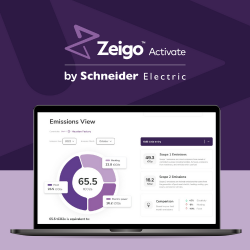Open source or proprietary software? A practical guide for production companies
Is open source software (OSS) the right decision for your production company? In contrast to proprietary software, the possibilities in terms of flexibility and scalability are endless. Yet, not all open source applications are alike. Here's a basic framework to evaluate OSS for your business.
By Emile Pierloot, account executive at Ghent-based scale-up Factry
From Firefox and Android to Linux and Python, open source is part of 70-90% of modern software solutions. Did you know that open source software powers 99% of all supercomputers worldwide? Open source software (OSS) is also becoming increasingly prevalent in the industrial world. Many production companies are turning to it to streamline operations, reduce costs, and foster innovation. But what are the real benefits of open source software, and where do its limitations lie?
What is open source software (OSS)?
At its core, open source software means that the source code is available for everyone to use, modify, and share. It's built on two main pillars: Freedom and transparency. You can use, modify, and distribute the software for free without special permission, while the source code is seen as part of the software and therefore must be made available for everyone that uses it. Also, OSS is almost always free of charge. Just because it's free of charge doesn't mean it's without cost.
OSS vs proprietary software
Let's explore the key differences between open source and proprietary software.
1. Flexibility
Production environments are almost never one-size-fits-all. With OSS, your company gets the freedom to adapt and modify the software to fit your unique needs. With proprietary software you're limited to the features and configurations provided by the vendor.
The inherent flexibility of open source software also allows for rapid customisation, ensuring the software grows with and can adapt quickly to your business and industry requirements. For example, by using an open source visualization tool, process insights can be made available to an infinite number of people, instead of a handful of technical people. This gives people in any department the freedom to explore, and learn from production data. However, you do have to be aware of the added complexity and the endless possibilities that open source software offers, and you need to plan for it ahead of time.
2. Cost-effectiveness
While OSS itself often has no upfront costs, there are additional expenses to consider such as implementation, support and training. For production companies, these costs can add up quickly if they're not properly accounted for. However, these costs mostly don't outweigh the benefits, such as cost-effective scaling, full ownership of data, flexibility to adapt to specific needs, and avoiding vendor lock-in.
3. Community support
Many popular open source tools are supported by a powerful ecosystem of developers, enthusiasts, and industry experts. This gives you access to a global community that continuously improves the software, provides fixes, and offers support through forums and collaborative spaces. That being said, communities also form around proprietary software ecosystems. But those communities are often controlled by the vendor and often do not encourage collaborative development, apart from feature suggestions.
4. Security
A common concern about open source software is trust - trust that it's secure, and free from significant bugs. Yet, Linus's Law - "given enough eyeballs, all bugs are shallow" - suggests that with more developers working on the code, vulnerabilities are more likely to be spotted and fixed. Open source software can't rely on "security through obscurity". Instead, it must be secure by design. Popularity is key — the more active the community, the more secure the software tends to be.
When to choose OSS over proprietary software?
The choice between OSS and proprietary software depends mostly on your business's size, complexity, and the in-house expertise that is present. For start-ups or smaller companies, he freedom to adapt the software yourself can be invaluable during the growth phase. However, over-customization can also lead to "lock-in," making future migrations a pain. Large organizations on the other hand often benefit from the support and stability that come with proprietary software. That is not to say that OSS can't still play a key role where customisation, transparency, and (data) ownership are key.
For start-ups, building custom software might seem tempting, but it can quickly become a distraction. For larger enterprises, overgrown development teams can lead to inefficiencies. Where possible, buy ready-made software to meet your needs. Build only when it allows your business to differentiate and deliver genuine value.
Featured Product

Zeigo Activate by Schneider Electric: Energy efficiency software for manufacturing facilities.
Whether you're responding to new legislation and regulations or getting pressure from stakeholders and customers, Zeigo Activate empowers companies to effectively calculate, track, and reduce their carbon footprint and become more energy efficient. By providing valuable insights, actionable data, and intuitive tools, Zeigo Activate is tailored for businesses at any stage in their energy efficiency journey. Our easy-to-use software allows you to set your emissions baseline and target, receive a customizable project roadmap, and connect to a network of regional solution providers in energy efficiency and renewable energy so that you can put your ambitions into action.
